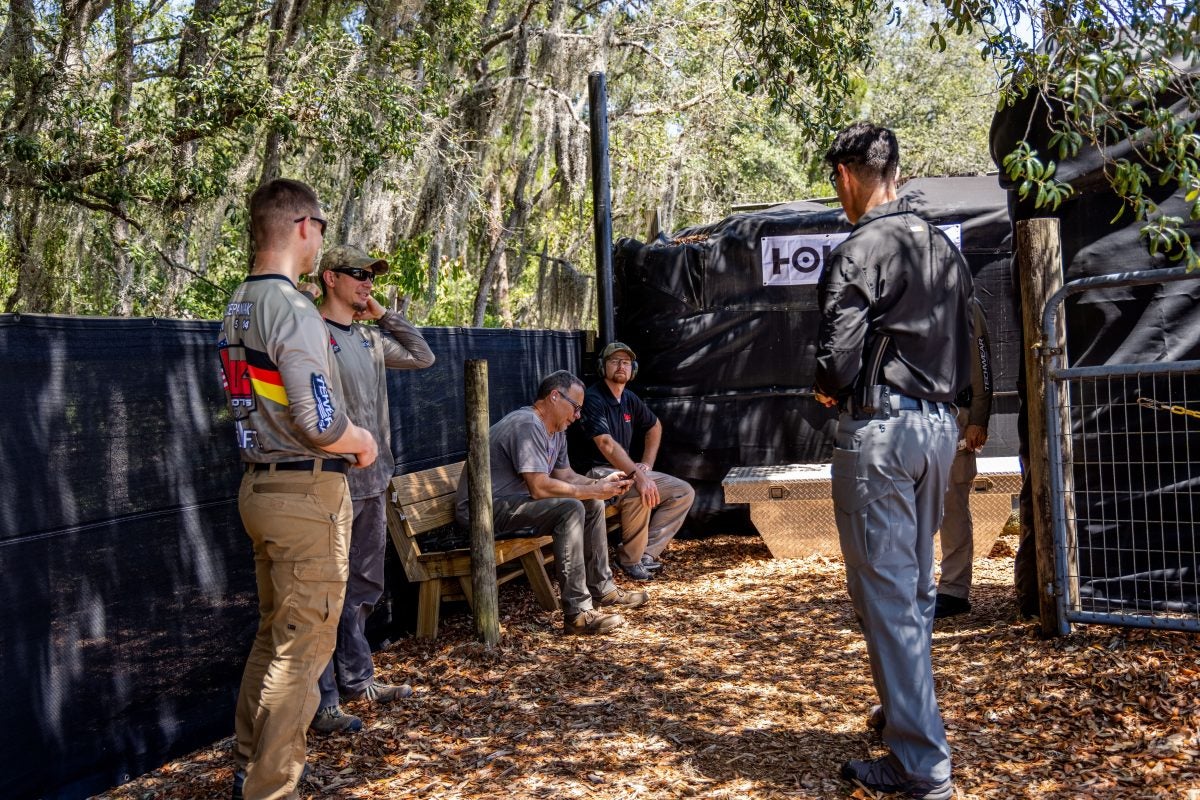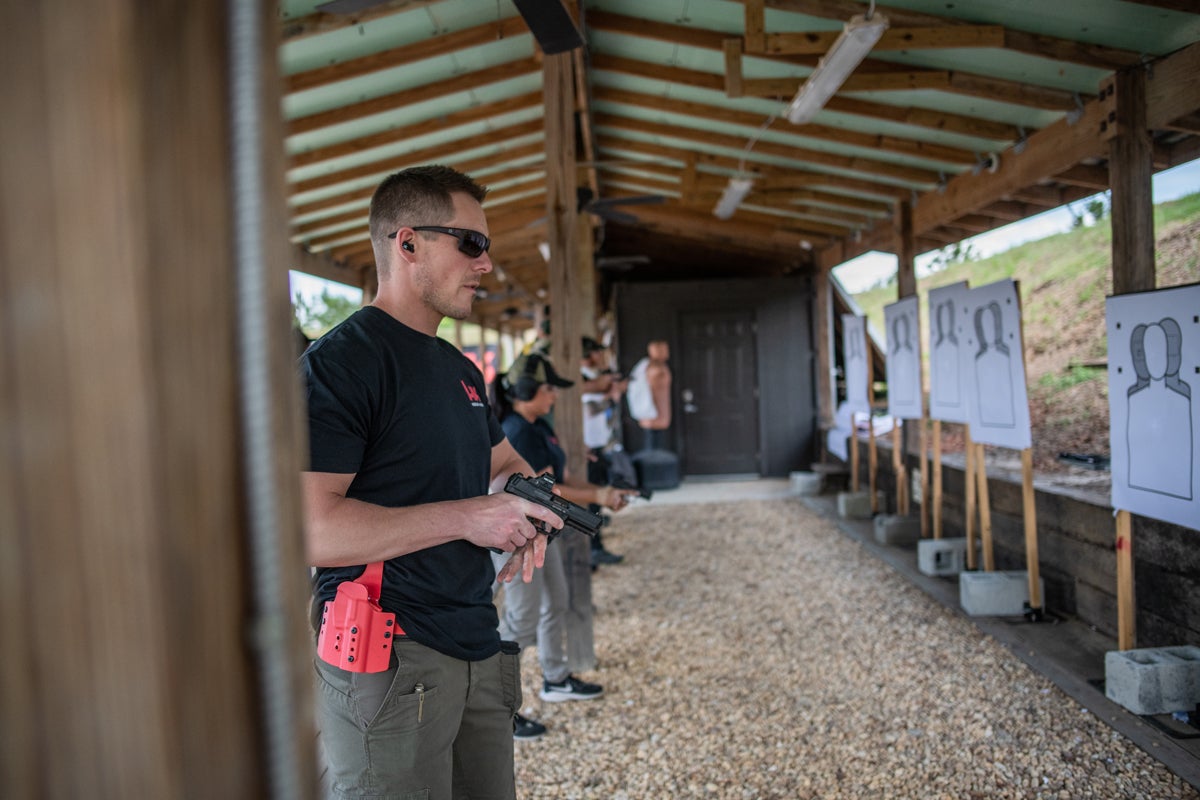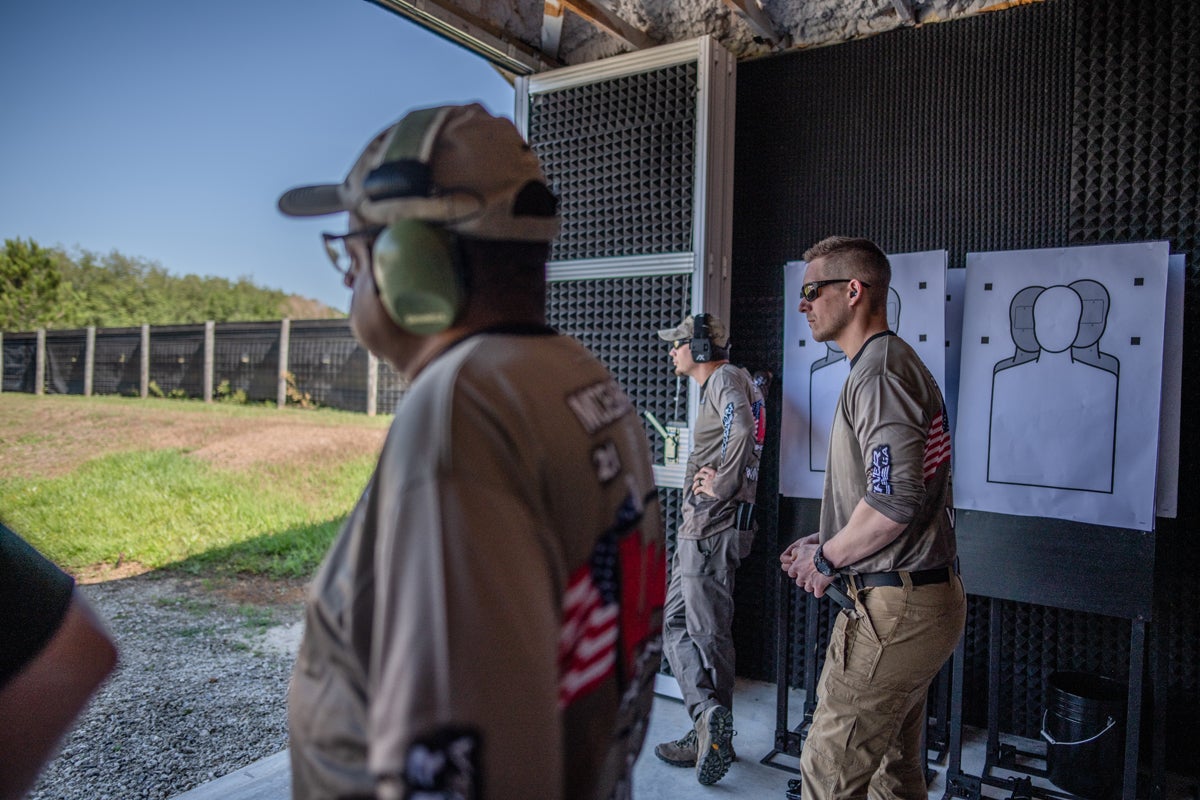Teaching Others about Firearms – Guns, Metaphors, Similes, and Stories
Phil Godding 03.14.22

All of good training relies on communication. Some of our information gets communicated by spoken words, some teaching is by printed page, some transmission of knowledge is by videos and slides, and some education happens by demonstration and hands on experiences (remember, there are students who learn best by touching, rather than by words). Recently, I wrote about an older friend (older than me anyway) who volunteered to teach me about using my muzzleloader. Al used a reloading metaphor to prepare me to learn how to load and shoot the muzzleloader. He built the analogy across time.
The first time I got exposed to reloading [the analogy in play] it seemed way too complicated and difficult to recall all the steps, much less learn to do safely. Al is the one who helped move my thinking from “reloading is too complicated” to understanding and following the process that has, over time, become almost therapeutic. Al is the one who worked with me to learn how to reload ammunition in bite sized steps. His style was classic:
- First, I watched him.
- Then, he had me go through a few steps on my own with him in watching distance.
We were working in his man cave while eating his wife’s best, fresh baked cookies and drinking coffee. The whole time he was talking to me about what was really important and what I could learn or figure out later. I came away with a half dozen rounds that I had loaded myself under his supervision. Before I left he gave me a reading assignment in a book on reloading. OK, he first sold me his extra Lyman’s reloading manual and then gave the reading assignment (that is not the way he remembers it).
First, I went to my garage workbench, cleaned, and prepped some shell cases. Then, I set up my press and collected the bullets, cases, primers, shell holders, powders, and dies. Next, I installed the dies following manufacturer’s instructions. Finally, I called Al to come over and look over my set up – with coffee, but no cookies (because I’m not that nice of a person). This time he taught higher level skills, but used the same process. First, we made a few rounds without primers and powder so I could learn how to measure case length, overall length, “feel” of the press at each stage, and fine tune the dies. Finally, we installed some primers, added some powder, seated some bullets, weighed and measured our results, and set them aside to be tried on my next trip to the range. I understood one straight-walled bullet reloading process.
Of course, over the years I have bent a few cases and even got one stuck in the die once or twice, but Al didn’t come over. He walked me through the process over the phone and reassured me that: “after you have broken a few de-priming rods and released a few stuck cases you are a real member of the reloading club.”
What does this story of a kindly friend teaching me to reload have to do with muzzleloading? Just this… When I laid out my confusing muzzleloading kit on the range bench one late fall afternoon he started with these words: “I taught you how to reload ammunition. Well, running a muzzleloader is just like that – except one charge at a time and the primer goes on last.” Easy. Reloading became the simile for arming a muzzleloader.
[Disclaimer: I’m a recovering English major and feel compelled to point out that if you insert the word “like,” such as my friend Al did, or you are making a direct comparison, you are really using a simile – still effective communication just a different critter, but the title of this piece just didn’t have the same “zing” with the word “simile” rather than “story.”]
Some other analogies I have used when teaching about firearms include:
- “Point your finger to practice aiming” – they don’t even need to pick up a gun to start making brain-body connections because they already have those connections! We are just going to add other objects to reinforce that fact – I’m telling them they already know how to point at stuff.
- “Use your dominant eye” – one eye is not making the other eye submissive, but using the stronger eye does get the task of aligning sight picture to happen quicker. At some point I’ll tell them I keep both eyes open even when using a red dot. I’m not bragging just telling them there is a lot to learn and practice helps.
- “The pistol will push back against your hand” – recoil gets a bad rap so I change the language to diminish the fear response in new shooters. We can re-conceptualize recoil as a “push” as opposed to “a tackle from an oversized outside linebacker.” If they are shooting something way too big I might use the linebacker metaphor. I had breakfast today with an older gentleman who wanted to sell me his 7mm Magnum deer rifle. It doesn’t just recoil, but actually punishes his 70-year-old body. I would never tell him that gun is just pushing against his shoulder – I would lose all credibility – sometimes you tell it straight.
- “Let the trigger surprise you” – honestly, the trigger isn’t going to surprise you, it is an inanimate object and won’t jump out and say “surprise,” but the action the trigger leads to should be surprising if you are pulling the trigger correctly.
- “Watch your six” – put your phone down and pay attention to what is happening around you.
- “Mind your muzzle” – I probably can’t keep you from talking, but if you keep waving that thing in my direction you are out of my class for breaking safety rules.
Each of these phrases uses an analogy to bring along a host of other possible meanings. For example, if I say “she’s drowning in money” I don’t really mean the person is out of breath due to cold cash. I would mean the cash flow is excessive and about to do her harm. One other use of analogy I find especially useful while teaching is the use of a narrative. My brother and I have a handful of stories that we weave in and out of our classes. Stories of decisions, personal mistakes, heightened responsibility, conflict, and conflict avoidance. The story is the “hook” that gets the student’s attention but the ongoing narrative is always about making a memorable point that ties into the next memorable point.
For example, I always talk about suicide and suicide prevention (I know, not required, but I think it is the moral thing to do). Sometimes I mention going into the home of a divorcing couple (totally invited) to remove a pistol. Other times I mention being the willing repository for weapons for an individual under severe stress. The stories are both true and metaphors then allow me to explain my thinking on all sorts of moral issues (lives I value more than mine), legal risk assessments (might have been smarter to involve the cops; maybe not), and would my legal insurance cover this action (most likely).
If you spend all your teaching time just telling stories to tell stories you get nowhere fast, but a judicious story that gets woven throughout the discussion will resonate for years. In the first carry class I took the instructor spent the whole four hours talking about why his black gun was the only one worth having. I don’t remember much else (except I never wanted to own a black gun simply on principle). I do have students who retake my classes every five years and have an “oh, I remember that” moment when I start teaching. They can tell me the high points of the story and the lessons learned. For those of you teaching, I recommend crafting a story that will teach four or five points that you can weave in and around the rest of the instruction you are providing. I know this approach to teaching works because if we ever meet in person you will ask about my friend Al.

